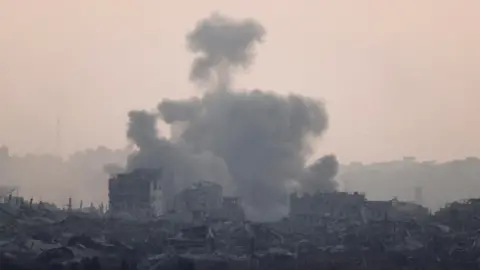In a significant development in the ongoing conflict surrounding Gaza, a senior official from Hamas has publicly declared the group’s decision to reject a new ceasefire proposal from the United States that is purportedly endorsed by Israel. This statement marks yet another chapter in the complex and prolonged struggle over the region, which has seen escalating tensions since the latest round of military actions began.
The announcement came shortly after the White House disclosed a plan put forth by U.S. envoy Steve Witkoff, emphasizing that Israel had provided consent to the proposal. Reports suggested that under this proposal, Hamas would be expected to release ten hostages alive, along with the return of the bodies of 18 deceased hostages. In return for this action, a ceasefire lasting 60 days would be initiated, alongside the release of several Palestinian prisoners currently held in Israeli jails.
According to the Hamas official, the terms of the proposed solution fail to meet the fundamental demands of the group, particularly the cessation of hostilities. The official stated that a formal response to the proposal would be forthcoming, emphasizing that the group’s position on the matter was resolute and grounded in their expectations for a more comprehensive resolution.
Prime Minister Benjamin Netanyahu of Israel has not yet publicly commented on the rejection of the proposal by Hamas. However, it has been reported that during a recent meeting with families of hostages, the Prime Minister expressed his acceptance of Witkoff’s plan. This hinged on the notion that it represents a viable step towards addressing the humanitarian and hostage crisis, which has reached alarming proportions in recent weeks.
The backdrop of these discussions is critical. Following the failure of a two-month ceasefire, which had been negotiated by the United States in conjunction with Qatar and Egypt, Israel reinstated a blockade on Gaza in mid-March and escalated military actions against Hamas. As a result, the pressure has mounted on Hamas to release the approximately58 hostages still in their custody, among whom at least 20 are believed to be alive.
In a broader context, the ramifications of this ongoing conflict have been severe. Reports indicate that the military operations have resulted in a staggering loss of life, with estimates of nearly 4,000 individuals killed over just the past ten weeks, as reported by Gaza’s Hamas-run health ministry. Furthermore, the United Nations has issued alarming statistics indicating that over 600,000 people have been displaced due to intense fighting and evacuation orders imposed by Israeli forces. A harrowing report from the UN’s Integrated Food Security Phase Classification (IPC) warned that around 500,000 individuals in Gaza are at imminent risk of facing catastrophic levels of hunger in the coming months if the blockade persists.
At a recent conference in Washington D.C., White House Press Secretary Karoline Leavitt confirmed that discussions concerning a ceasefire were ongoing. She reiterated that the proposal submitted involved Israel’s backing and support, hoping to expedite the safe return of all hostages. However, the Hamas official later refuted that this plan aligned with previous discussions, emphasizing that the offer lacked crucial agreements on turning the temporary truce into a lasting ceasefire.
Netanyahu highlighted in discussions that Israel would likely not withdraw its forces until all hostages are accounted for, and he underscored Israel’s resolve to dismantle Hamas’s operational capacity completely. With the rampant destruction in Gaza and an urgent need for humanitarian relief, the interplay between military action and diplomatic solutions continues to shape a precarious societal landscape for the people within the region.
The evolving narratives surrounding the hostages, military strategies, and humanitarian crises highlight the urgency for a resolution that addresses the burgeoning suffering and instability in Gaza and its surroundings. As both sides remain entrenched in their positions, the realities on the ground for civilians caught in this conflict continue to deteriorate, urging international calls for a reevaluation of strategies to foster peace.



